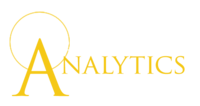ANLY482 Current Practicums: Current Practicums
|
|
|
|
|
|
| Team | About the Project | Student Member(s) | Project Supervisor | Sponsor |
|---|---|---|---|---|
| Terrorism : Unraveling Hidden Patterns |
The purpose of the practicum is to acquaint students with quantitative studies of terrorism. The dataset includes the merger of two kinds of datasets. The first is a dataset of terrorist organizations and their attributes (ideology, size, age, funding, etc). The second is a dataset of events or terrorist attacks and their attributes (date, target, weapon used, people killed, etc) from 1967-2011. The goal is to 1) find a stable pattern, 2) display it visually, and 3) attempt to explain it or at least identify some factors that correlate with it. Those should be theoretically informed. You can also display the way the factors are correlated with explaining the pattern.
Here are some ideas that express this theme:
Suggested Platforms: SAS Visual Analytics suite; tableau or D3.js for developing custom visualizations Libraries to explore: SAS VA, D3.js, C3.js Other recommendations: No prior knowledge of any courses is assumed while designing this project but prior knowledge of Visual Analytics will be good for taking up advanced analysis during project related tasks. Recommended Team Composition: Students are free to come up with their own teams but forming a team with diverse backgrounds and skill-sets is highly recommended. |
Prof. Seema Chokshi
Lecturer of Information Systems, Programme Head, SMU Undergraduate Second Major in Analytics |
Prof. Michael GENKIN
Assistant Professor of Sociology, SOSS |
|
| Improved Decisions for Ocean Freights |
The Green Transformation Lab (GTL) is a joint initiative by SMU and DHL aimed at accelerating the evolution of sustainable logistics across Asia Pacific. Leveraging SMU’s multi-faculty academic excellence and DHL’s sustainability services, expertise and capability in supply chains, the Green Transformation Lab is focused on creating solutions that help companies transform their supply chains, becoming greener, more resource efficient and sustainable. Types of analysis:
The aim of this analytics project is to perform data analytics and build a dashboard using a visualization tool such as Tableau.
The features on the visualization tool includes (but not limited to):
Suggested Platforms: Tableau or D3.js for developing custom visualizations, SAS Visual Analytics suite; Libraries to explore: D3.js, C3.js, SAS VA, Gephi Other recommendations: No prior knowledge of any courses is assumed while designing this project but prior knowledge Visual Analytics will be good for taking up advanced analysis during project related tasks. Recommended Team Composition: Students are free to come up with their own teams but forming a team with diverse backgrounds and skill-sets is highly recommended. |
Prof. Seema Chokshi
Lecturer of Information Systems, Programme Head, SMU Undergraduate Second Major in Analytics |
Prof. TAN Kar Way
Assistant Professor of Information Systems (Practice) |
|
| Recommendations Matter to Us !! | Recommendations and opinions from others are a part of our daily lives. From eating out in a restaurants to buying commodities online we yearn to know what others have to say about them. We want to see what others have experienced from a purchase partly because it involves spending our hard earned money but largely because of the plethora of information on available options out there. Seeking recommendations is an attempt towards staying away from bad experiences and maximizing once sense of satisfaction from a purchase. This project shares people's opinion and their ratings on Yelp about businesses operating in various cites from U.K., Germany, Canada to Unites States. It will give you an opportunity to apply exploratory and predictive analytics techniques such as n-gram analysis, topic identification, sentiment analysis, ratings prediction, item-item similarities to design a flow that can help users across the world find the place of their choice faster with improved precision. Stress will be given on how you design a general purpose model using restaurant related data which can be applied to any other practice in hospitality domain such as hospitals, hotels equally. Types of analysis: The teams can analyse the data to unravel many aspects such as: 2. Clustering similar businesses, Item-Item to user-user similarities to develop and refine recommendations. 3. Sentiment analysis of English text, use of n-gram analysis to filter out prominent phrases and tips from the reviews, identification of topics of discussions. Identifying sarcasm and sarcastic reviewers. Identifying what are the main complainants, suggestions and wishes of reviewers. 4. Apply above mentioned analysis techniques to warn businesses when their overall image starts to go down, highlights new ideas for them to increase sales. By using the means of a dashboard display findings.
Suggested Platforms: SAS Visual Analytics suite; SAS EM, python or R for text analytics; tableau or D3.js for developing visualizations Libraries to explore: SAS EM and SAS VA sentiment analysis package, Natural language tool kit & libraries (both Python 2.7 and R), D3.js, C3.js Other recommendations: No prior knowledge of any courses is assumed while designing this project but prior knowledge of Social and Contextual Analytics, Visual Analytics will be good for taking up advanced analysis during project related tasks. Recommended Team Composition: Students are free to come up with their own teams but forming a team with diverse backgrounds and skill-sets is highly recommended. |
Prof. Seema Chokshi
Lecturer of Information Systems, Programme Head, SMU Undergraduate Second Major in Analytics |
Prof. Seema Chokshi
Lecturer of Information Systems, Programme Head, SMU Undergraduate Second Major in Analytics |
